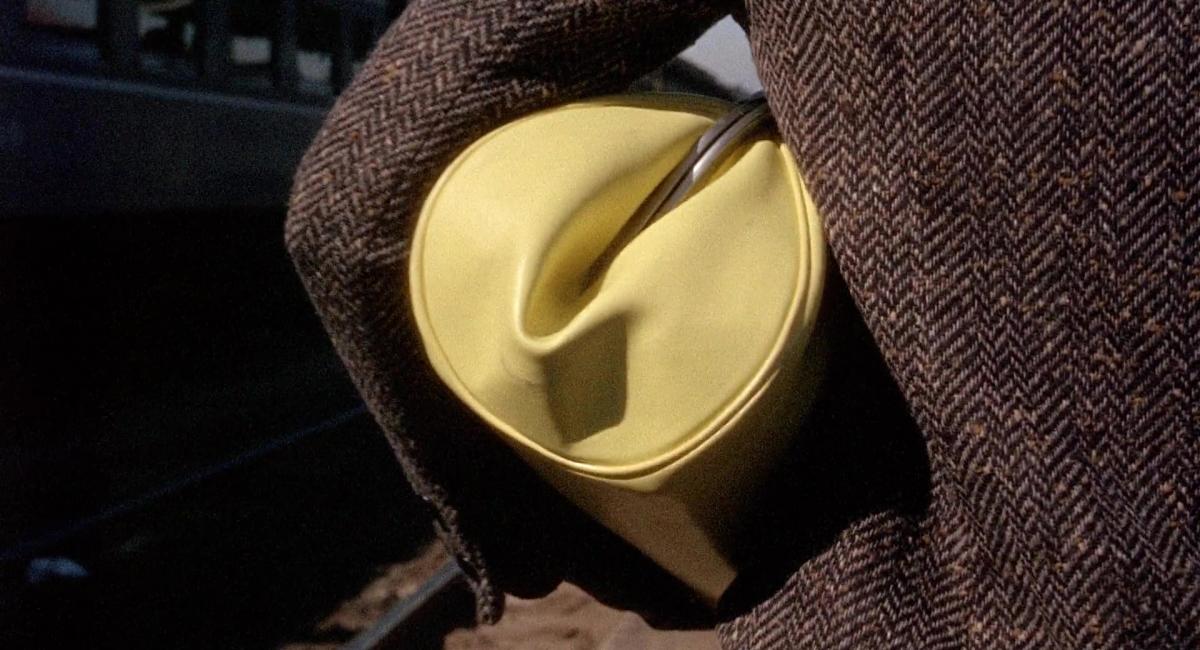Passage: Adrian Martin
Unreal

The words drop in the flow of a larger sentence, a larger point. They occur between parentheses. Is this why – to my knowledge – no one has ever cited them? They are devoted to Alfred Hitchcock’s Marnie (1964) by Raymond Bellour in his major 1977 text “Énoncer” (“To Enunciate”), later included in his collection L’Analyse du film (The Analysis of Film). I first read them – in an English translation by Bertrand Augst and Hilary Radner for an early issue of the American feminist journal Camera Obscura – when I was 18 years old. And then I went around quoting these words – in classrooms, in articles, in conferences – for two decades or more:
… that unreal film we call film …
It was only after all those years that, needing to footnote this splendid turn of phrase, I realised I had gotten it wrong! It’s “that unreal real we call film”, not “that unreal film”. Which, when you think about it a bit, makes somewhat more sense. My mind – or my memory – had changed the paradoxical double play on real into a double play on film.
I harbour a fondness for my personal, customised, incorrect version, because it meant something – said something – to me at the time. In my formulation, film took on a double sense, one that is common in English: there is film as the thing that runs through cameras and projectors; and there is film as something that covers a surface, such as a “thin film of dust” on an uncleaned table. The two meanings, combined, evoke a curious phenomenon: cinema (film) as something that spreads and envelops, covers your consciousness like lava. Not just one film but all film, film as medium. That unreal film.
But what did Bellour really say? The complete sentence in which his réel irréel makes its humble appearance proves tricky for prospective translators; today, I am not entirely satisfied by the renditions of either Augst/Radner in ’77 or Constance Penley’s 1990 revision – both versions strip out the parentheses (as well as several commas), and seem a little uncertain about the subject-object relations involved. Let me add that, given the interchangeability of adjective and noun in French, réel irréel could also mean real unreal! But here’s my attempt, drawing on my illustrious predecessors, while trying hard to do exact justice to the original:
It is in delegating a look that he clearly never relinquishes (since the camera never stops showing, constituting, shot by shot, that unreal real we call film) that the director, here, takes on the position of enunciator.
Here’s the original:
C’est de déléguer un regard qu’il ne cesse évidemment d’exercer (puisque la caméra n’en finit jamais de montrer, de constituer, plan par plan, ce réel irréel qu’on appelle film) que le metteur en scène, ici, se trouve en position d'énonciateur.
The paradox that Bellour posed is even better than mine. He probably didn’t invent the concept of the unreal real; one can find it, here or there, attributed to Henri Michaux (whose collected works Bellour edited for Pléiade), or to Georges Perec. But it was in the pages of Bellour’s article that the idea hit me with its full force.
Let me be clear. Bellour’s text is a great analysis of Marnie; but it was not Marnie that was specifically illuminated for me in this passage. It was this unreality – unreal film or, as I now know better, unreal real – that proposed to me, in a sudden illumination, an entire theory of film, a bracing approach to the medium as a whole. An ethics, almost, of film appreciation.
Film is the unreal real. So many critics and theorists have tried to formulate that paradox, in their own, sweet ways – Gilberto Perez, for example, when he called his first major book in 1998 The Material Ghost. Something is concretely real in cinema (through the camera, for Bazin or Daney); and very much of it is unreal, artificial, treated, re-drawn and re-shaped. Even more pointedly, cinema (for we spectators) is both document and dream, history and hallucination, trace and phantom. We are caught, eternally, between the horns of a magnificent dilemma: that unreal real we call film.
Image from Marnie (Alfred Hitchcock, 1964)
In its new section Passage, Sabzian invites film critics, authors, filmmakers and spectators to send a text or fragment on cinema that left a lasting impression.

